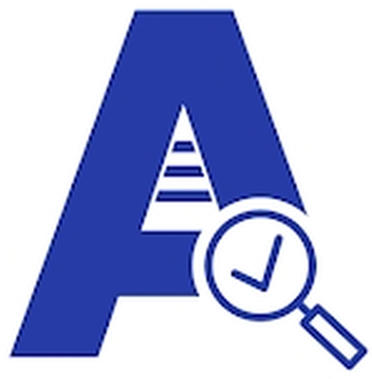Management by Walking Around (MBWA)
Management by Walking Around (MBWA) is a leadership approach where managers or supervisors regularly walk through the workplace to engage with employees, observe operations, and identify any issues in real-time. When integrated with a tool like eAuditor Audits & Inspections, MBWA can be more structured, data-driven, and impactful. eAuditor Audits & Inspections allows managers to document their observations, capture real-time feedback, and track progress systematically.
Here’s how you can use eAuditor Audits & Inspections to enhance MBWA:
1. Create a Standardized Management by Walking Around MBWA Checklist
With eAuditor Audits & Inspections, you can create custom MBWA templates for managers to use while walking around. This ensures consistency in observations and reporting. Key items to include in an Management by Walking Around MBWA checklist could be:
- Employee engagement: Are employees focused, motivated, or experiencing issues?
- Workplace conditions: Are workstations clean, organized, and safe?
- Operational efficiency: Do employees follow processes correctly? Is there any bottleneck?
- Safety and Compliance: Are employees following safety protocols and wearing proper gear?
- Customer interactions: Are frontline employees providing good customer service?
2. Capture Real-Time Observations and Feedback
As managers move through the workplace, they can use eAuditor Audits & Inspections to:
- Record observations: For example, identifying equipment that requires maintenance or spotting areas where workflow can be improved.
- Capture photos: Attach photos to specific checklist items to document any issues or highlight areas of excellence.
- Log feedback from employees: eAuditor Audits & Inspections’s forms can capture comments from employees on the spot, so you can gather real-time insights into their challenges or suggestions.
3. Monitor Employee Performance and Well-being
MBWA is not just about inspecting processes but also engaging with employees. With eAuditor Audits & Inspections:
- Create questions that prompt the manager to ask employees about their workload, morale, or challenges.
- Document interactions and identify recurring themes that need addressing (e.g., understaffing, poor equipment, or training needs).
4. Set Up Recurring MBWA Inspections
Managers can schedule recurring MBWA audits using eAuditor Audits & Inspections, ensuring that they consistently engage with different departments and teams. For example, a manager should get reminder to conduct MBWA at specific intervals (daily, weekly, or monthly) depending on the needs of the organization.
5. Generate Reports and Insights
Compile all MBWA data gathered automatically into:
- Instant reports that summarize observations, photos, and feedback.
- Actionable insights where managers can identify trends, recurring issues, or operational bottlenecks.
- Follow-up tasks for any items that need resolution (e.g., broken equipment, employee concerns).


6. Track Follow-ups and Accountability
eAuditor Audits & Inspections makes it easy to assign tasks for follow-up. If a manager identifies an issue during MBWA (e.g., broken machinery or lack of safety compliance), they can:
- Assign the task to the relevant team for resolution.
- Set due dates and track completion, ensuring that issues are resolved in a timely manner.
- Monitor progress via the dashboard, which offers real-time updates on pending tasks or unresolved problems.
7. Encourage Employee Feedback Through MBWA
While conducting MBWA, eAuditor Audits & Inspections allows managers to actively listen to employees and document any suggestions or concerns. This fosters an open communication culture where employees feel heard and valued. Managers can:
- Record anonymous or attributed feedback through eAuditor Audits & Inspections’s feedback forms.
- Use the data for continuous improvement by identifying pain points directly from the employees.
8. Incorporate Health & Safety Audits into MBWA
MBWA can be combined with regular health and safety audits. Managers can use eAuditor Audits & Inspections to ensure that safety standards are met, including:
- Observing the use of personal protective equipment (PPE).
- Checking for hazards in the workplace (e.g., slippery floors, improper equipment handling).
- Ensuring that emergency exits are clear and accessible.
9. Real-Time Collaboration and Notifications
eAuditor Audits & Inspections can be set up to send real-time notifications to relevant personnel when an issue is flagged during MBWA. For example:
- If a safety hazard is detected, a notification can be sent directly to the safety officer.
- Managers can collaborate with other departments by sharing their MBWA reports immediately, improving cross-functional communication.
10. Dashboard for Continuous Improvement
eAuditor Audits & Inspections’s dashboard allows management to review historical MBWA data and identify:
- Trends in employee feedback or operational issues.
- Recurring issues in certain departments or processes that need addressing.
- The overall impact of MBWA on employee morale, productivity, and operational efficiency.
Sample Management by Walking Around MBWA Checklist in eAuditor Audits & Inspections:


- Employee Interaction:
- Are employees engaged and motivated?
- Are there any immediate concerns or challenges shared by employees?
- Any suggestions for improving processes?
- Operational Observations:
- Are employees following the correct procedures?
- Are there any inefficiencies in the workflow?
- Workplace Safety:
- Are safety measures being followed (PPE, signage, cleanliness)?
- Any potential hazards that need addressing?
- Customer Experience (if applicable):
- Are customers being served in a timely and friendly manner?
- Are there any complaints or feedback from customers?
- General Observations:
- Are there any equipment malfunctions or areas that require maintenance?
- Is there any need for additional training or resources?
By leveraging eAuditor Audits & Inspections, Management by Walking Around MBWA becomes more structured and actionable, making it easy for managers to engage in continuous improvement and proactive leadership.
